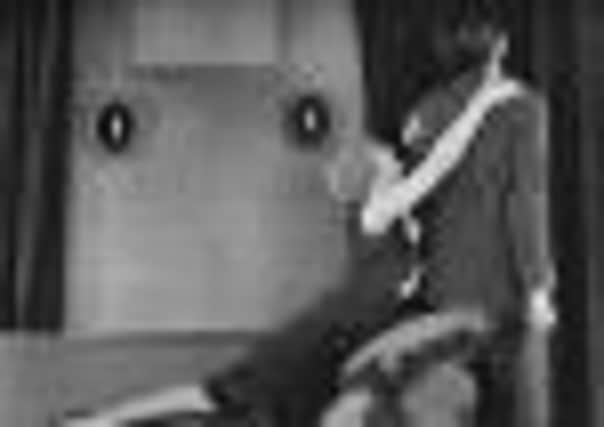Hitchcock goes digital as chiller back on screen


Always an innovator, Alfred Hitchcock might well have arched an inscrutable eyebrow and offered a glimmer of a smile at the prospect of his 1926 silent melodrama The Lodger being given a new platform.
Hitchcock’s take on the Jack the Ripper hysteria was his sensational breakthrough at the age of just 27. Now, 86 years after its initial release, it is rewarded with a restoration courtesy of the British Film Institute and a newly commissioned score by Nitin Sawhney played by the London Symphony Orchestra.
Advertisement
Hide AdAdvertisement
Hide AdAnd the partnership doesn’t end there. While the film receives its world premiere at London’s Barbican Centre on July 21, it will play simultaneously in Sheffield, Bradford, Derby, Manchester and 10 other venues from Cardiff to Dundee.
Sheffield’s Showroom and the National Media Museum, in Bradford, form part of the new Cross Arts Venues Network (CAV) which links cinemas across the UK to offer a “simulcast” of Hitchcock’s film.
It’s been described as “the beginning of an exciting new era in entertainment”.
Ali Hossaini, the CAV Network’s chief executive officer, goes further, pointing to the scheme as “enabling partners to co-create and co-curate on programming [and] delivering new forms of engagement with audiences”.
Advertisement
Hide AdAdvertisement
Hide AdBoth a pioneering development and an extension of the satellite opportunities that have allowed live sports events, Glyndebourne opera productions, National Theatre plays and 3D documentaries to be seen by regional audiences, the CAV Network could be a vision of the future.
So how does it work, and why is it better? The CAV network’s promotional blurb highlights an “ultra high-speed digital network” connecting venues and their partners with each other and with the Internet using Ethernet technology.
The core of the network allows members to send and receive data between each other “at speeds of approximately 200 times typical broadband download speed”. A feature film in full high-definition can be downloaded in under an hour.
On a rudimentary economic level it also dramatically reduces the attendant costs of travel and accommodation in these straitened times.
Advertisement
Hide AdAdvertisement
Hide Ad“Digital technologies empower filmmakers and audiences,” claims Hossaini, the Iraqi/American artist, philosopher and documentary producer who helped pioneer webcasting back in the mid-1990s.
“They lower barriers to production, and they allow individuals unprecedented choice in the media they enjoy. Arts programming has a bright future because digital economies make the creation, distribution and exhibition of work far more feasible from a business standpoint.”
It also means more people through more virtual turnstiles and increased revenue for the various partners involved. The rattle of cash registers aside, what does it mean for the Yorkshire region and the arthouse cinemas involved? “Yorkshire has a rich film heritage, and it also has audiences hungry for regional content,” adds Hossaini. “CAV Network would like to partner with Yorkshire Film Archive – and its counterparts everywhere – to make regional content more easily available to programmers and audiences.”
He describes both the Sheffield and Bradford hubs as “visionary institutions” and leaders in the use of digital technologies. Indeed Oscar-winning producer Lord Puttnam once called Pictureville, the premier screen at the National Media Museum, “the best cinema in the world”.
Advertisement
Hide AdAdvertisement
Hide AdFuture aspirations include making the CAV Network available “anywhere in Yorkshire” with Hossaini and his team considering how any cinema/arts venues, “including film societies”, can benefit.
“Audiences deserve a rich array of offerings from cinema, performance and the visual arts,” says Hossaini.
“[Our aim is to] to serve audiences with the best of screen-based arts, and I hope it can establish itself a vital element in the tapestry of British culture.
“At the same time, we would like to be a global leader that shows how the cultural and creative sectors can evolve solid business models whilst keeping pace with the changing needs of audiences.”
Advertisement
Hide AdAdvertisement
Hide AdAlfred Hitchcock’s third film as director was his first in the genre with which he would become synonymous: the suspense thriller. West End heartthrob Ivor Novello was cast as a mysterious stranger who takes a room at a London boarding house just as an unknown killer is murdering blondes on the city’s streets.
Somehow it seems right that The Master’s brilliance should be purveyed to a fresh audience. Hitch is still making us twitch.
Hitchcock – The master at work
Alfred Hitchcock was one of the very few directors to survive from the silents of the Twenties and still be active 50 years later. He came to dominate the genre of the suspense thriller with titles such as Strangers on a Train, Rope, Vertigo, Psycho and Frenzy. He is played by Sir Anthony Hopkins in the recently-wrapped Hitchcock, about the making of Psycho. The Lodger will be screened at 7.30pm, July 21.